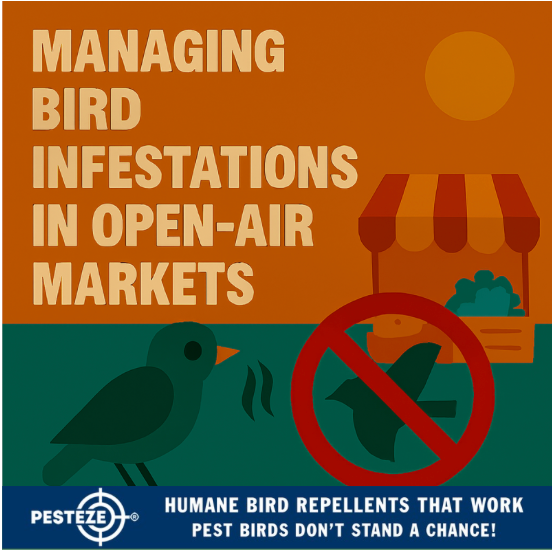MANAGING BIRD INFESTATIONS IN OPEN-AIR MARKETS

MANAGING BIRD INFESTATIONS IN OPEN-AIR MARKETS
SUMMARY
Bird populations in open-air markets create significant health risks, economic challenges, and food safety concerns for vendors and customers in 2025.
FEATURES
- Food Safety Protection: Comprehensive strategies to prevent bird contamination of market products.
- Vendor Economic Preservation: Methods to minimize product damage and potential sales losses.
- Public Health Management: Advanced approaches to reduce disease transmission risks.
- Hygienic Environment Maintenance: Techniques for creating bird-resistant market spaces.
- Regulatory Compliance: Strategies that meet food safety and health department guidelines.
GUIDE DESCRIPTION
Open-air markets represent complex environments that create ideal conditions for bird populations. The combination of exposed food sources, multiple vendors, and dynamic human activity provides unprecedented opportunities for avian interactions and potential contamination.
Bird infestations in market environments pose multifaceted challenges that extend beyond simple nuisance concerns. Food safety becomes a critical issue, with potential pathogen transmission, product contamination, and health risks creating significant economic and public health challenges.
Technological innovations in 2025 provide sophisticated solutions for managing bird populations in open-air market environments. Advanced sensor systems, intelligent deterrent technologies, and targeted environmental modifications offer comprehensive protection strategies that balance vendor needs with ecological considerations.
Market management requires a holistic approach to bird control that addresses multiple environmental factors. Understanding local bird species, their behavioral patterns, and specific market infrastructure becomes essential for developing effective intervention strategies.
Professional market managers must implement comprehensive bird management protocols that integrate multiple prevention techniques. Strategic environmental modifications, intelligent deterrence technologies, and ongoing monitoring systems provide the most effective long-term solutions.
Legal and health regulations play critical roles in developing bird management approaches. Comprehensive strategies must balance vendor economic interests, public health protection, and potential environmental considerations.
- Pukhraj Sharma


Comments 0